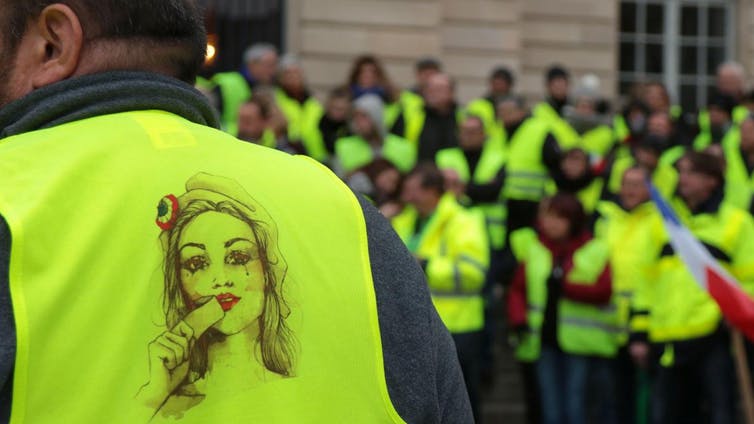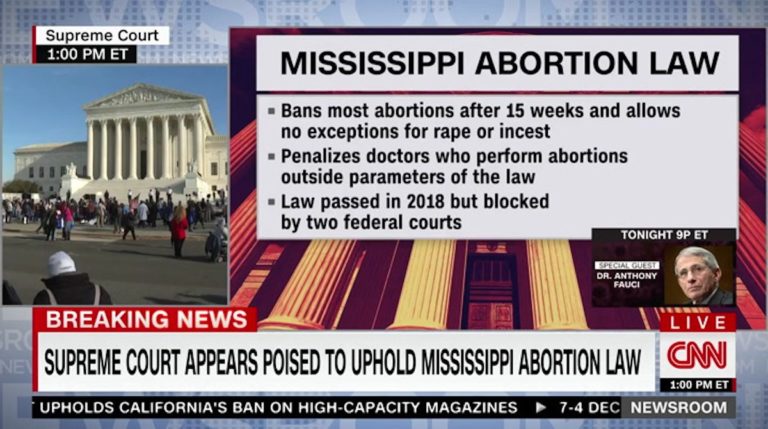
François-Xavier de Vaujany, Université Paris Dauphine – PSL et Jeremy Aroles, Durham University
In May 2016, a Propublica report showed that an algorithm named COMPAS (“correctional offender management profiling for alternative sanctions”) used by a US court was biased against black prisoners – the program overestimated the probability that blacks would reoffend. Artificial intelligence, chatbots and other algorithms have also been shown to produce racism, sexism, discrimination and violence toward customers, employees and society at large.
On November 21, 2018, Carlos Ghosn, the mighty leader of the Renault-Nissan alliance, was arrested on his private jet soon after landing at Tokyo’s Haneda airport. Nissan said that its chairman has been placed under arrest after he allegedly violated Japanese financial law. Nissan explained that “over many years” Ghosn and board director, Greg Kelly, had been under-reporting compensation amounts to the Tokyo Stock Exchange securities report. Nissan added that “numerous other significant acts of misconduct have been uncovered, such as personal use of company assets.”
In November 2018, France discovered how a simple yellow vest could be turned into a powerful symbol. After a decision to increase fuel tax, the first “gilets jaunes” protests emerged. They started on social media before becoming visible on the streets. Everywhere in France, the “gilets jaunes” expressed their anger. Events have since taken a dramatic turn in larger cities, such as Paris.
What do these three events have in common? They all epitomise a pressing concern for our society, namely the extension of responsibility. Beyond the judiciary sphere, we contend that the spatial and temporal extension of responsibility should be a key issue for managers, politicians and activists alike.
Responsibility as the obligation to repair damages
In a key text, the French philosopher Paul Ricœur “Le concept de responsabilité: essai d’analyse sémantique” (“The concept of responsibility: an attempt at semantic analysis”) delves into the question of responsibility. In the French civil law, responsibility is understood as the obligation to repair a damage caused by someone who will be judged guilty of the damage caused. In the French penal law, responsibility is the obligation to face the corresponding punishment. Being responsible thus amounts to submitting oneself to both these obligations. Ricœur investigates the philosophical underpinnings of responsibility through the work of Kant, Jonas or Lévinas who have explored issues of engagement, duties and alterity. Ricœur also stresses the importance of the imputation process in the setting of a responsibility. This requires imputability, corresponding to what Kant sees both as the attribution of the responsibility and its moral judgement. This is premised on a key assumption (for “imputing”) related to the author of an action, namely their knowledge of the law… “Nul n’est censé ignorer la loi”. In turn, this implies distinguishing between free (based on free will) and natural (beyond free will) causes; “Then only, freedom and imputability coincide” (Ricœur, 1994, p. 34).
Ricœur notes that contemporary philosophical debates have slightly transformed the notion of responsibility. They have raised questions related to the “ascription” of a responsibility and most of all, questioned the continuities between natural and free causes. Distinguishing between the “he/she”, “they” or “it” in the making of responsibility is more and more difficult. As suggested by Ricœur, “we need to go through the confrontation of causalities and attempt a phenomenology of their interweaving” (1994, p. 39).
Extending these philosophical issues, the stress on the possibility (in the French civil law) of “fault” introduces a new scenario. One can be responsible, but not guilty (this is the famous “responsible but not guilty” pronounced by Georgina Dufoix in the 1990s). As such, the subjective link between an action and its author requires a systematic discussion. One could know or not, be aware or not… Alterity and the problem of solidarity with others (in particular vulnerable people) also enter the equation.
Understanding the scope of responsibility
Importantly, responsibility is about time and space. On that point, Ricœur notes a major shift in the judiciary interpretation of responsibility:
“An unlimited extension of the scope of responsibility, the future vulnerability of a man and its environment becoming the main focal point of a responsible concern. By scope, we mean the extension, both spatial and temporal, given to the notion of effects of our actions.” (1994, p. 44).
Surely, in a world made of digital infrastructures, small and big organisations, collective and artificial intelligence, the perspective opened by Ricœur is fascinating. It goes well beyond corporate social responsibility (CSR) and most questions related to “traditional” business ethics. The scope of acts is more than ever extended in the past and the future; imputing responsibility is both highly retrospective and prospective. The ways in which our society has changed since the 90’s (when Ricœur wrote his piece on responsibility) make this point even more urgent. While Kant assumed a contemporaneity of actions and consequences, Ricœur sought to re-introduce duration and narration.
Let us return to our first introductory example. Algorithms or chatbots do not distinguish between “good” and “bad” people, good and bad comments, and so on. They are managed by people and other software. In what context does an inappropriate behaviour occur? Who and “what” should be blamed for it? What is our responsibility as citizens? Should we judge just the sentences produced today? Should we remove the tool and punish the people who fed the system with bad and inappropriate behaviours, with a full knowledge of what they did and a knowledge of the law? Should we also impute responsibility to the engineers who opened the door to artificial learning? From a more prospective perspective, shouldn’t we also blame the companies investing massively in AI and performing more and more the idea of autonomous intelligence? Where should we stop this assemblage of people and things in our responsibility-focused narration? The more we retrospectively and prospectively dig into our present and the more it seems interwoven with automats and technologies.
Responsibility within complexity
The problem is even more complex in the case of Carlos Ghosn and other corporate scandals. Shared roles in organisations strengthen the possible dilution of responsibility. We do not want to exonerate Carlos Ghosn but we also need to consider that a company is made of processes, infrastructures, boards of directors, modes of governance that introduce collective forms of responsibility. The everyday life of organisations is often more complex, and made of very subtle events that can be at the heart of a disaster.
This is also epitomised by the recent social movement of the ‘Yellow vests’ in France. This movement, which largely emerged in and by means of social media, is a complex assemblage of people, heterogeneous slogans, deep frustration and despair. There are obviously many micro-organizations inside Facebook and people sharing roles offline, on the street, at crossroads, and in the streets. But as suggested by Valiorgue and Roulet, the movement remains largely disorganised, more or less purposefully. We see again here a very interesting, troubling issue: nobody is responsible for the worst. A member of the ‘yellow vests’ protest, often invited on TV shows, recently said: “I am not responsible”, just before explaining that next Saturday awful things may happen. But how can a social movement become political without being responsible? And the argument is ‘reversible’: the French president and the government claim a kind of irresponsibility. No roles in front, no legitimate spokespersons, so no legitimate dialog. Of course, we are particularly sceptical about this counterargument, which is particularly irresponsible from actors expected to embody, more than others, responsibility.
Indeed, the yellow vests movement is particularly intriguing and probably very different to our two other examples. Less technological than the chatbots, less
organised than the Ghosn story, yet much more visible and interwoven
with moral sources of responsiblity than both of them.
Ricœur’s invitation to explore responsibility is fascinating, because it paves the way to the exploration of key questions for management and collective activity. It opens the door to ontological discussions around the materiality, time and space of the experience of responsibility. We move from the question of being responsible to that of becoming responsible. Responsibility is continuously produced by assemblages A of assemblages B, thus blurring the boundaries between A and B. How to responsibilise people also becomes a fundamental question.
A June 2020 workshop by the PSL, Université Paris-Dauphine, “Organizations, artifacts and practices” (OAP) will explore the issues raised in this article. Titled “Responsibility and accountability in the digital area: Do collective and artificial intelligences change the deal?”, the event will bring together organisation scholars, sociologists, political scientists, anthropologists and philosophers and activists.![]()
François-Xavier de Vaujany, Professeur, PSL-Université Paris-Dauphine (DRM), Université Paris Dauphine – PSL et Jeremy Aroles, Assistant professor in organisation studies, Durham University
Cet article est republié à partir de The Conversation sous licence Creative Commons. Lire l’article original.




24 Comments
Pingback: จุดโดดเด่นของสล็อตเว็บตรง อย่าง สายบุญ สล็อต
Pingback: EVOPLAY GAMES คืออะไร
Pingback: get penis bigger
Pingback: พรมปูพื้นรถยนต์ Changan Deepal S07
Pingback: faw99 สล็อต
Pingback: Anya Belcampo
Pingback: nakara exploit
Pingback: big 666 สล็อต
Pingback: ไก่ตัน
Pingback: ประวัติ wm casino
Pingback: โบท็อกราคา
Pingback: dark168
Pingback: Going Here
Pingback: รับจัดงานอีเว้นท์
Pingback: slot99
Pingback: tga168
Pingback: สัญลักษณ์พิเศษภายในเกม mahjong ways 2
Pingback: grimms
Pingback: คลินิกความงาม นางลิ้นจี่
Pingback: jili cityslot เล่นผ่านเว็บ ระบบมือถือ
Pingback: Mostbet casino
Pingback: namo89
Pingback: essentials
Pingback: 1xbet